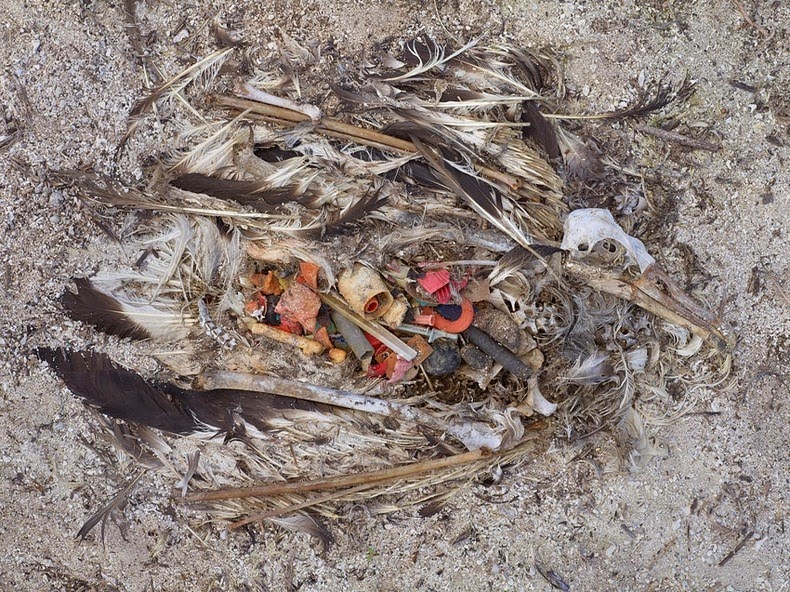Photographer Chris Jordan, who specializes in large-scale works that depict the magnitude of our consumerism and its impact on our environment, has brought us these heart-wrenching images of birds killed by ingesting plastics that increasingly pollute our oceans.
For three years, the Seattle-based photographer and a small crew of cinematographers have been filming the albatross living and breeding on the island of Midway Atoll, in the Pacific, more than 2,400 miles from Alaska. The birds, which normally feed on squid and other animals that swim near the surface of the water at night, have instead been accidentally swallowing pieces of floating plastic, often mistaking them for food, that now litter the world’s oceans. The birds then return to the island, regurgitate the plastic and feed it to their young.
Of the 500,000 albatross chicks born here each year, about 200,000 die, mostly from dehydration or starvation. The chicks that died from those causes had twice as much plastic in their stomachs as those that died for other reasons. The plastic punctures the bird’s stomachs, creating life-threatening injuries. Other times they die of choking, dehydration or starvation as the plastic leaves little room for water or food.
20 tons of plastic debris ends up on Midway each year and five tons of that is fed to the chicks. Aside from, albatross studies have shown up to 1 million seabirds choke or get tangled in plastic nets or debris every year. About 100,000 seals, sea lions, whales, dolphins, other marine mammals and sea turtles suffer the same fate.
Midway Atoll is a critical habitat in the Pacific Ocean. Three million seabirds and 250 different marine species populate the island, the nearby reefs and lagoons. It is the winter home for most of the world’s remaining populations of the Laysan, Black-footed, and Short-tailed albatrosses, as well as fourteen other species of seabirds. Critically-endangered Hawaiian monk seals, green sea turtles and about 300 spinner dolphins call this remote paradise their home.

More pictures at www.chrisjordan.com/gallery/midway/. Official website: www.midwayjourney.com
Sources: Wired / Pacific Voyagers






















This is awful...we need to do something to help the poor birds
ReplyDeleteThe unseen effect because of industrial age
ReplyDeleteYes. Let's all return to the stone age.
ReplyDeleteThese distressing images should be exhibited to a wider audience. I haven't lost hope and I don't think that humans are heartless in general and if more people see this tragic reality and realise who caused it, I think there will be a stir of conscience. Photos like these need to be on the plastic packages and products so that they remind us that recycling is the only way to reduce our waste, just like they put those appalling pictures of smokers on the cigarettes packs...
ReplyDelete